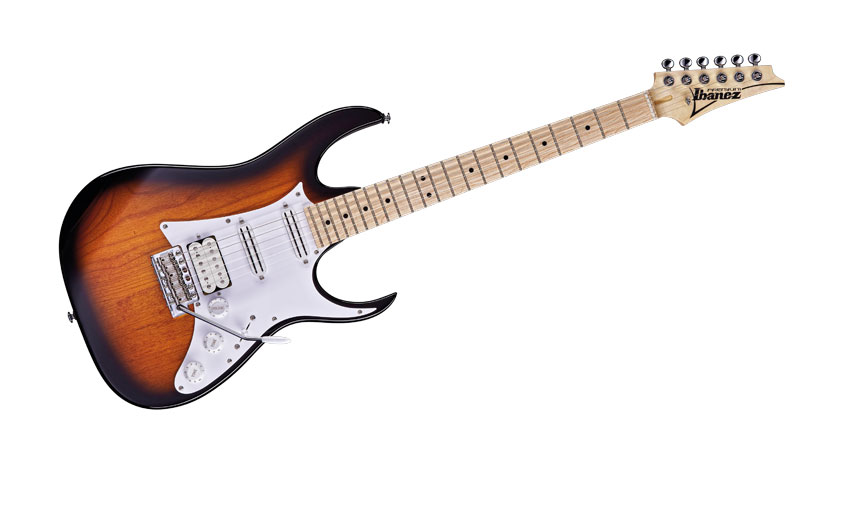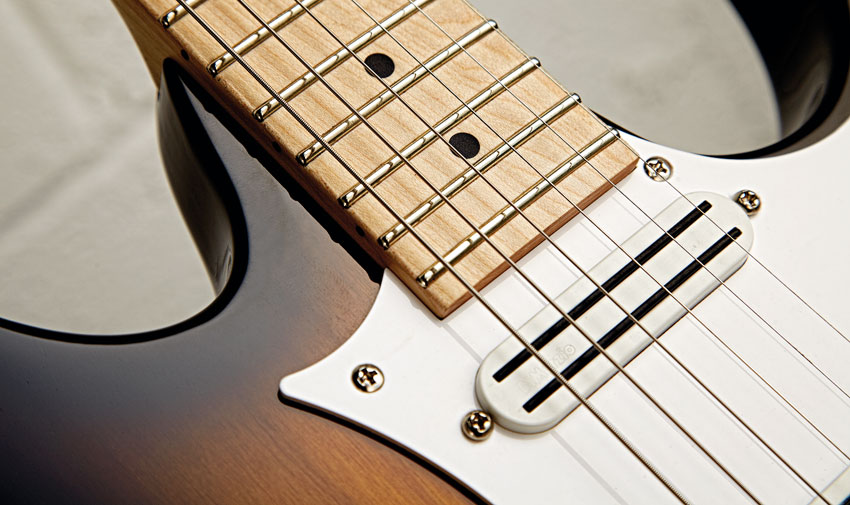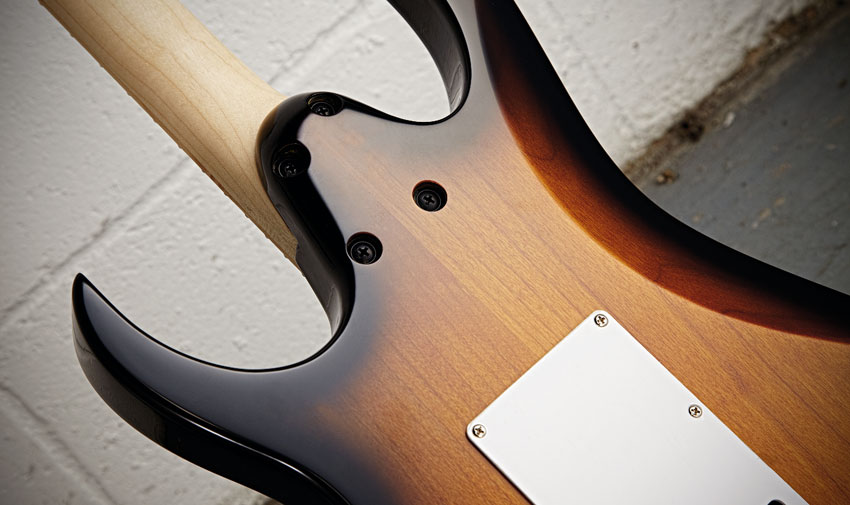MusicRadar Verdict
The traditional looks may attract floating Ibanez voters. It sounds great and plays wonderfully well.
Pros
- +
Gorgeous neck and frets. Classic vibe, price tag.
Cons
- -
Aesthetic question: do modern rock players like '50s sunburst?
MusicRadar's got your back

Ibanez AT10P review

Pickups

Neck

Rear
The Ibanez AT10P is an Indonesian-made incarnation of Andy Timmons' high-end signature AT1000CL. Alongside the recently reviewed UV70P and JS24P, it's part of the new Ibanez Premium Series, which centres on the firm's core rock market with a range of guitars built in East Java.
As Paul Oldfield from Ibanez's UK distributors, Headstock, explains: "The quality and expertise that is associated with the Japanese-made Prestige series models has been utilised for the Premium Series guitars to create a more affordable instrument, but still with Prestige-style appointments."
"The Premium Series AT10P, priced under a grand, represents a huge saving on the original"
Andy Timmons' refusal to compromise in any regard with quality has led to the Japanese AT1000CL, which at £2,248 is up there with the most expensive Ibanez signature models. Consequently, this Premium Series AT10P, priced under a grand, represents a huge saving.
Headline features are common across the two models. In fact, the only big difference on the spec sheet is the inclusion of the more traditionally styled Wilkinson WV6-SB bridge on the AT10P rather than the higher quality Wilkinson-Gotoh VSVG featured on the higher priced model.
The neck here proves to be a favourite player - it's fairly wide and fat, and loaded with big frets. The pickups comprise Timmons' long-time choice, a single-coil- sized DiMarzio humbucker called The Cruiser in both the middle and neck positions as well as his signature AT-1 'bucker in the bridge. These are selected by a five-way lever (that doesn't offer any coil- splitting options), plus a volume and two tones.
If we're honest, the two-tone sunburst finish here isn't quite as vibrant as that of its Japanese sibling, but we're struggling to find any other significant differences.
Sounds
"The AT10P really could be the modern HSS Strat-alike you've always hankered after"
Perhaps because of the traditional-style, vintage- inspired vibrato, the AT10P is noticeably resonant and really could be the modern HSS Strat-alike you've always hankered after - imagine a classic Stratocaster, but with an apparent hotter output and darker tonality. The pickups react well to high-end moderation by the dual tone controls and you can mix in some moody low-end to positions three, four and five on the selector: just rely on amp gain to add cut.
Want all the hottest music and gear news, reviews, deals, features and more, direct to your inbox? Sign up here.
For classic rock, the bridge-placed AT-1 is smooth and satisfying, and we find that we don't miss coil-split options too much because the narrow aperture Cruisers have single-coil character aplenty. However, their darker nature and body allow a high-gain amp tone to really sing without perceivable loss of clarity and, if you have the legato chops, you'll have a silky smooth tone worthy of the fusion style Andy Timmons himself so enjoys.
Simon Bradley is a guitar and especially rock guitar expert who worked for Guitarist magazine and has in the past contributed to world-leading music and guitar titles like MusicRadar (obviously), Guitarist, Guitar World and Louder. What he doesn't know about Brian May's playing and, especially, the Red Special, isn't worth knowing.